- Kungfu武学:《少林螳螂拳》苏龙(302P):2023年-09月-22日
- Kungfu武学:《梅花螳螂拳》陈志忠(254P):2023年-09月-05日
- Kungfu武学:《精武传统螳螂拳术》张建方(385P):2023年-08月-06日
- Kungfu武学:《六合螳螂拳》刘敬儒(286P):2023年-07月-26日
- Kungfu武学:《太极梅花螳螂拳“梅花路”手法解》柳国顺、于斌(11P):2023年-05月-17日
- Kungfu武学:《螳螂拳》中国武术系列规定套路编写组(397P):2023年-05月-06日
- Kungfu武学:《七星螳螂拳》李占元、刘崇禧(252P):2023年-04月-18日
- Kungfu武学:《太极梅花螳螂拳体用全书》张炳斗(382P):2023年-04月-10日
- Kungfu武学:《螳螂拳》王洪发(209P):2022年-11月-19日
- Kungfu武学:《螳螂拳》黎峰(192P):2022年-11月-03日
- Kungfu武学:《梅花螳螂拳》周永祥(98P):2022年-10月-20日
- Kungfu武学:《梅花螳螂拳连环八路短打》佚名(6P):2022年-10月-10日
- Kungfu武学:《螳螂拳臂肘在实战中的应用》李宏杰(4P):2022年-10月-02日
刘崇禧是中国国家武术队第一代成员,亦是七星螳螂拳第九代宗师,他指出现时的国家队有太大的金牌压力,过份追求技巧,动作的难度要高和好看,很多表演招式是花拳绣腿。更有甚者为求美观,将多家的招式综合而为一,却未考虑到各个流派在运劲和手法上各有不同,反而变成四不像。
刘崇禧是中国国家武术队第一代成员,亦是七星螳螂拳第九代宗师,他指出现时的国家队有太大的金牌压力,过份追求技巧,动作的难度要高和好看,很多表演招式是花拳绣腿。更有甚者为求美观,将多家的招式综合而为一,却未考虑到各个流派在运劲和手法上各有不同,反而变成四不像。
77岁的刘崇禧打完整组七星螳螂拳的套路,依然没有气喘。他说,传统的武术套路,并不是单纯的招式动作,受过正规指导的习武之人,可以由幼年打到耄耋。因为健身强体和防身自卫,是中国武术发展的两大重要功能。现时一些高难度的动作,过了30岁也不容易完成,失却健身、养生的意义。
他尤其觉得中国现时的金字塔式挑选代表队成员的牺牲太大。他说,很多儿童6、7岁就入省队,童年和青少年就在练功中度过。体校并不重视文化课程,到他们17、18岁离开时往往是一名文盲。即使入选国家队或留在省队,也在金牌的压力下,过度催谷而满身伤患;不少人的运动生涯30岁结束之后都生活困难。
刘崇禧发现本地的武馆反而更能保留传统武术的优点。他说,加国的教练和学生在尊师重道方面,做得比中国很多武馆更好。教练的动作非常规范,又以身作则;并且能够将动作与理论结合。他最称许的是不同派别可以彼此合作开班授徒,没有同行相忌。
说到螳螂拳,刘崇禧自然如数家珍,他说螳螂拳是一个相当大和完整的拳种,传统螳螂拳发展至今共有34套路、养生功和剑等。螳螂拳的始祖是山东省即墨县的王郎,直到第三、四代以后的传人才有史实,之前就并不明确;追源溯始,螳螂拳应该是诞生于明末清初。
由于螳螂拳发源于即墨,在胶东一带非常盛行,但前五代都只是在山东授套b。霍元甲于民国初年在上海创办精武会,邀螳螂拳第六代的罗光玉南下,与鹰爪的陈子正及少林的赵连和合称精武三大教头。
山东螳螂拳又称北螳螂,与流传于广东客家地区的南螳螂是两个截然不同的系统。北螳螂主要分为:梅花、七星、六合和太极螳螂四大派。少林螳螂与梅花螳螂是同一个套路。
刘崇禧出生在山东省武术之家,受家庭熏陶,自幼养成习武的习惯,后来追随螳螂拳一代宗师青岛的李占元为师,成为李占元得意门生。四、五十年代,在山东及全国有「小螳螂」的美誉。他在1953年被选入国家队,当年的队员包括蔡龙云、邵善康、肖恩鹏、 田永福、赵淑琴等武术名家。武术队在中央体育学院受训(北京体育大学的前身),破除武术沿袭的门户之见,采理论与实践并重的教学和训练方法,队员之间也互相切磋。中国十大元帅之一的贺龙,生前经常观看武术队的演出。
五十年代中期,由于一宗牵连甚广的间谍案,中央下禁武令,到1958年底才又再准许设立武馆。刘崇禧期间致力研究地质学,成为中国着名的石油专家,大学博士班学生无数。他在文革时被下放安徽,幸得地方政府支持,在省队担任教练,令他未终断过习武。他退休后专注研究螳螂拳各种不同的拳谱,徒手和兵器套路,以及散打动作。
刘崇禧说,螳螂拳是一个相当大和完整的拳种,传统螳螂拳发展至今共有34套路、养生功和剑等。螳螂拳的始祖是山东省即墨县的王郎,直到第三、四代以后的传人才有史实,之前就并不明确;追源溯始,螳螂拳应该是诞生于明末清初。
Liu Chongxi is the first generation member of the Chinese national martial arts team and also the ninth generation master of the Seven Star Mantis Fist. He pointed out that the national team at the time of its appearance had too much pressure to win gold medals, excessively pursued skills, and the difficulty and beauty of the movements were high and beautiful. Many performance moves were flower fists and embroidered legs. Even more so, in pursuit of aesthetics, they combine multiple moves into one, without considering the differences in luck and techniques among different schools, and instead become four different.
Liu Chongxi is the first generation member of the Chinese national martial arts team and also the ninth generation master of the Seven Star Mantis Fist. He pointed out that the national team at the time of its appearance had too much pressure to win gold medals, excessively pursued skills, and the difficulty and beauty of the movements were high and beautiful. Many performance moves were flower fists and embroidered legs. Even more so, in pursuit of aesthetics, they combine multiple moves into one, without considering the differences in luck and techniques among different schools, and instead become four different.
77 year old Liu Chongxi played the complete set of Seven Star Mantis Fist routine, but still did not have asthma. He said that traditional martial arts routines are not just simple moves and movements. Those who have received formal guidance in martial arts can fight from a young age to an old age. Because fitness and self-defense are two important functions in the development of Chinese martial arts. At present, some difficult movements are not easy to complete even after the age of 30, losing the significance of fitness and health preservation.
He particularly feels that the sacrifices made by China’s current pyramid style selection of team members are too great. He said that many children join the provincial team at the age of 6 or 7, and spend their childhood and adolescence practicing martial arts. Sports schools do not attach great importance to cultural courses, and by the time they leave at the age of 17 or 18, they are often illiterate. Even if selected for the national team or stayed in the provincial team, they were under the pressure of gold medals and excessively rushed to the bottom, resulting in injuries all over their bodies; Many people have difficulty living after the end of their sports careers at the age of 30.
Liu Chongxi found that local martial arts schools are actually better able to preserve the advantages of traditional martial arts. He said that coaches and students in Canada do better than many martial arts schools in China in respecting their teachers and valuing their values. The coach’s actions are very standardized and set an example; And able to combine actions with theory. What he most praises is that different factions can cooperate with each other to start classes and teach apprenticeships, without any taboo among peers.
When it comes to Mantis Boxing, Liu Chongxi is naturally familiar with it. He said that Mantis Boxing is a relatively large and complete type of boxing, with a total of 34 traditional Mantis Boxing techniques, health preservation techniques, and swordsmanship developed to this day. The ancestor of Mantis Fist was Wang Lang from Jimo County, Shandong Province. It was not until the third and fourth generations that there were historical records of its descendants, and it was not clear before; Tracing back to the origin, Mantis Fist should have been born in the late Ming and early Qing dynasties.
Due to its origin in Jimo, Mantis Fist was very popular in the Jiaodong area, but the first five generations were only taught in Shandong. Huo Yuanjia founded the Jingwu Society in Shanghai in the early years of the Republic of China, inviting Luo Guangyu, the sixth generation of Mantis Fist, to travel south and join forces with Chen Zizheng from Eagle Claw and Zhao Lianhe from Shaolin to become the three major coaches of Jingwu.
Shandong Mantis Fist, also known as the Northern Mantis, is a completely different system from the Southern Mantis that has been passed down in the Hakka region of Guangdong. The Northern Praying Mantis is mainly divided into four schools: Plum Blossom, Seven Star, Six Harmonies, and Tai Chi Praying Mantis. Shaolin Mantis and Plum Blossom Mantis are the same routine.
Liu Chongxi was born into a martial arts family in Shandong Province. He was influenced by his family and developed a habit of practicing martial arts from a young age. Later, he followed Li Zhanyuan, the first master of Mantis Fist in Qingdao, as his teacher and became a proud disciple of Li Zhanyuan. 4、 In the 1950s, it was known as the “Little Mantis” in Shandong and throughout the country. He was selected for the national team in 1953, with players including martial arts experts such as Cai Longyun, Shao Shankang, Xiao Enpeng, Tian Yongfu, Zhao Shuqin, and others. The martial arts team received training at the Central Institute of Physical Education (predecessor of Beijing Sport University), breaking away from traditional beliefs in martial arts and adopting a teaching and training method that emphasizes both theory and practice. Members also learned from each other. He Long, one of the top ten marshals in China, often watched performances of martial arts teams during his lifetime.
In the mid-1950s, due to a widely implicated espionage case, the central government issued a martial arts ban, and it was not until the end of 1958 that the establishment of martial arts schools was allowed again. During Liu Chongxi’s time, he devoted himself to studying geology and became a renowned petroleum expert in China, with numerous doctoral students in the university. During the Cultural Revolution, he was sent to Anhui and fortunately received support from the local government. He served as a coach in the provincial team, which allowed him to continue practicing martial arts. After retirement, he focused on researching various types of Mantis Fist techniques, unarmed and weapon routines, as well as Sanshou movements.
Liu Chongxi said that Mantis Boxing is a relatively large and complete type of boxing, and traditional Mantis Boxing has developed a total of 34 routines, health preservation techniques, and swords. The ancestor of Mantis Fist was Wang Lang from Jimo County, Shandong Province. It was not until the third and fourth generations that there were historical records of its descendants, and it was not clear before; Tracing back to the origin, Mantis Fist should have been born in the late Ming and early Qing dynasties.

















































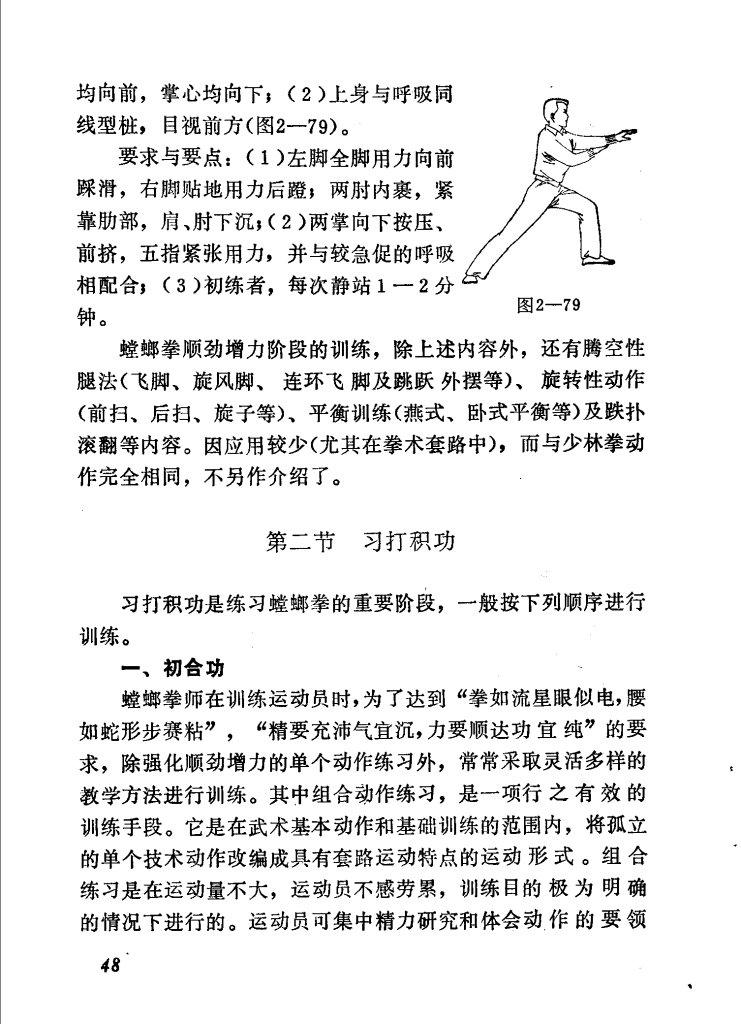
















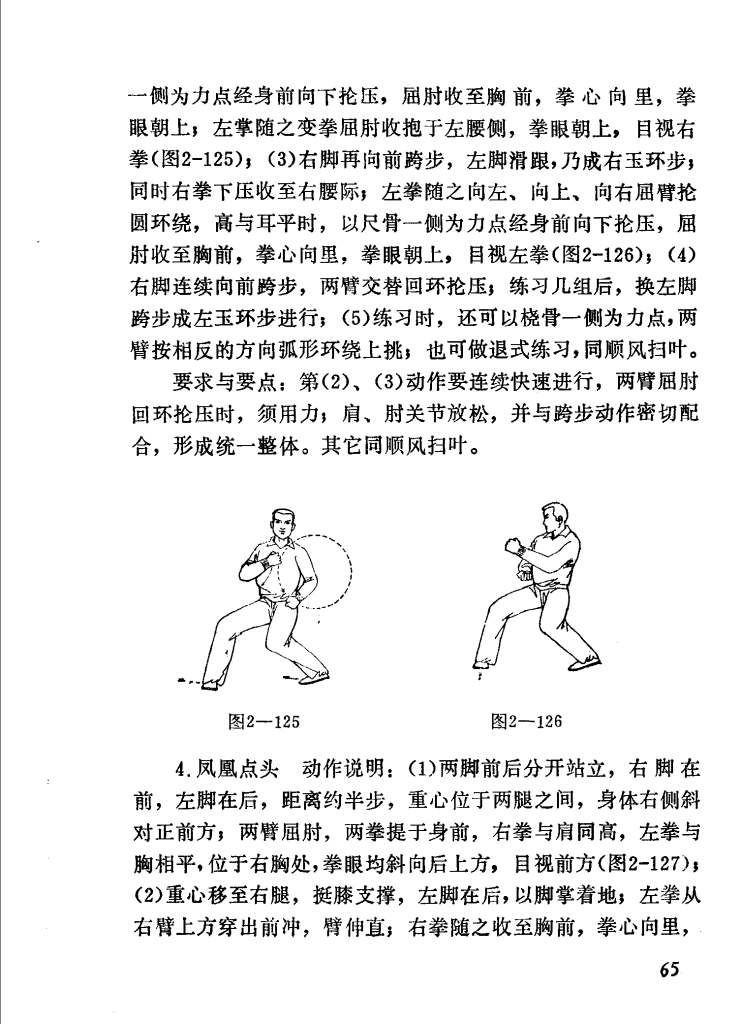
























































































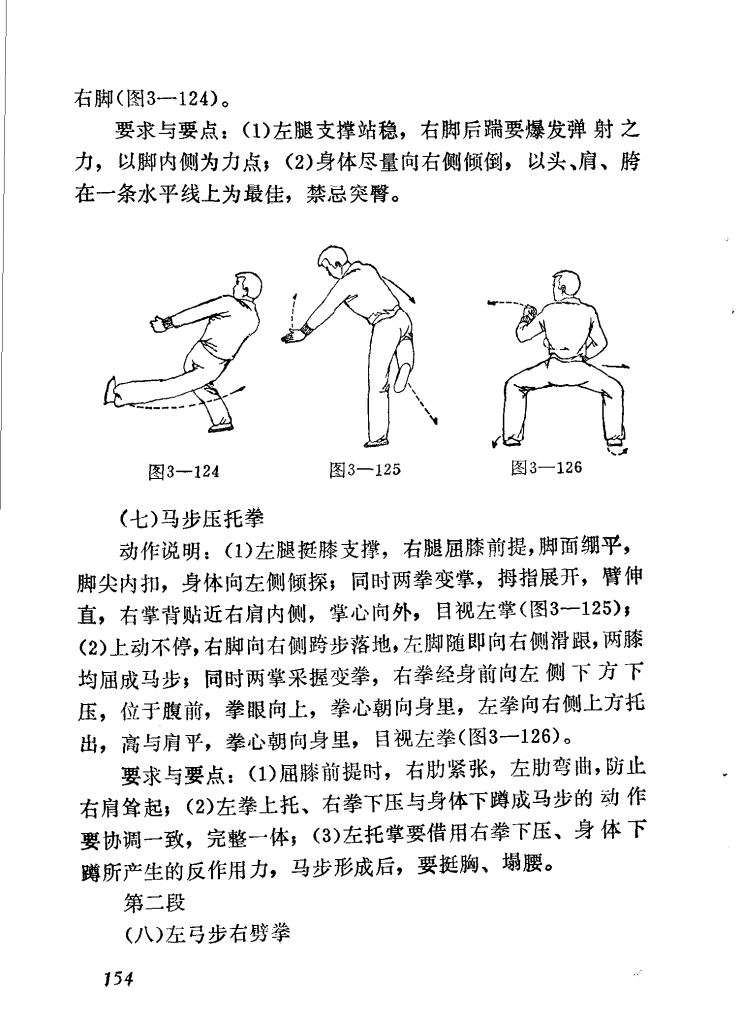





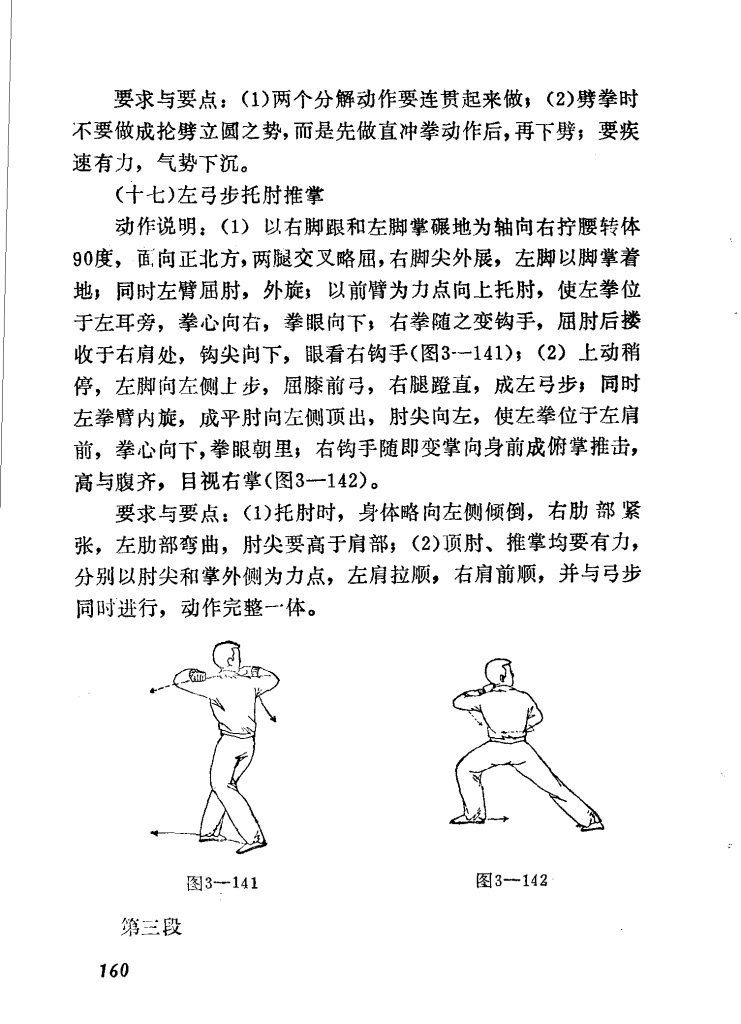


































































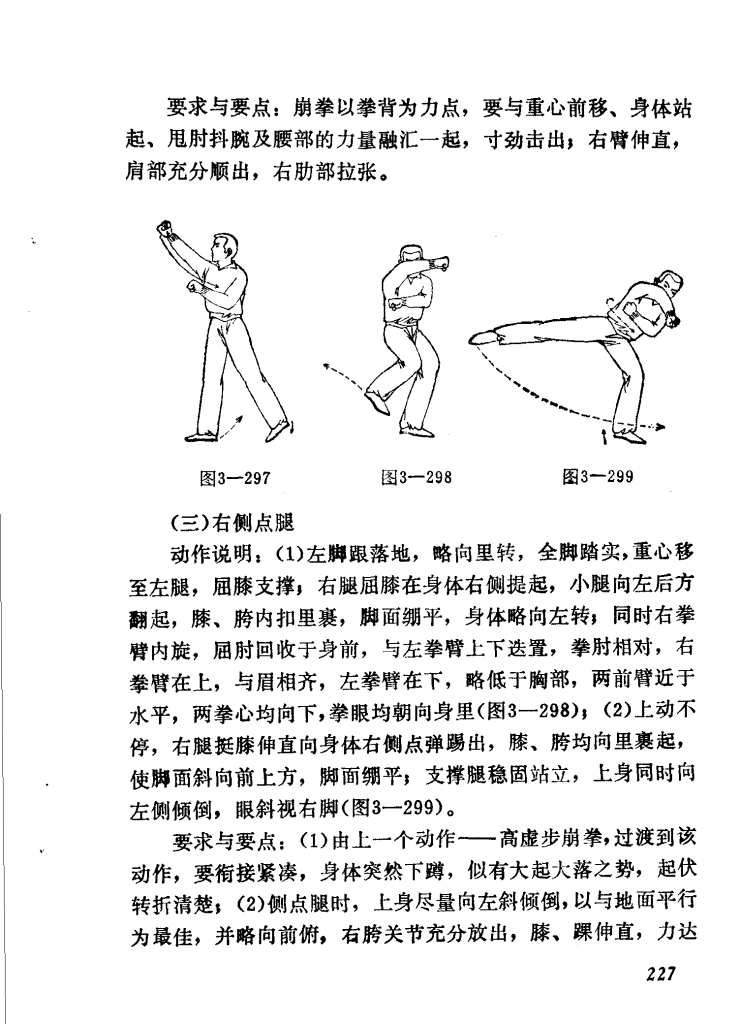























Culture文化 Kungfu武学 252P 《七星螳螂拳》李占元、刘崇禧
历史上的今天 ( 13 ):
- 2024年-04月-18日:SEGA:I Love Donald Duck - Georgia Ou no Hihou
- 2024年-04月-18日:SEGA:I Love Mickey and Donald – Fushigi na Magic Box
- 2024年-04月-18日:SEGA:DokiDoki Penguin Land: Uchuu Daibouken / Penguin Land 企鹅君
- 2024年-04月-18日:SEGA:Hyper Marbles 大碰撞
- 2024年-04月-18日:SEGA:Double Dribble - The Playoff Edition NBA季后赛
- 2024年-04月-18日:SEGA:Hyokkori Hyoutanjima - Daitouryou wo Mezase 大统领
- 2024年-04月-18日:SEGA:Hurricanes
- 2024年-04月-18日:SEGA:Humans, The 新人类
- 2024年-04月-18日:SEGA:Hook 小飞侠/铁钩船长
- 2024年-04月-18日:SEGA:Honoo no Doukyuuji: Dodge Danpei 炎之斗球儿:躲避球弹平
- 2024年-04月-18日:SEGA:Home Alone 2: Lost in New York 小鬼当家2
- 2024年-04月-18日:SEGA:Home Alone 小鬼当家
- 2024年-04月-18日:News新闻:2024年4月18日新闻简报
可点 ➠ 2023年-04月-18日 ➠ 271 s ➠ ♥ 0

